Growing Wollemi Pines
The discovery of this ancient rainforest tree from the time of Gondwanaland caused a global sensation. Our horticulturists have written some gardening tips so you can grow a Wollemi Pine at home.
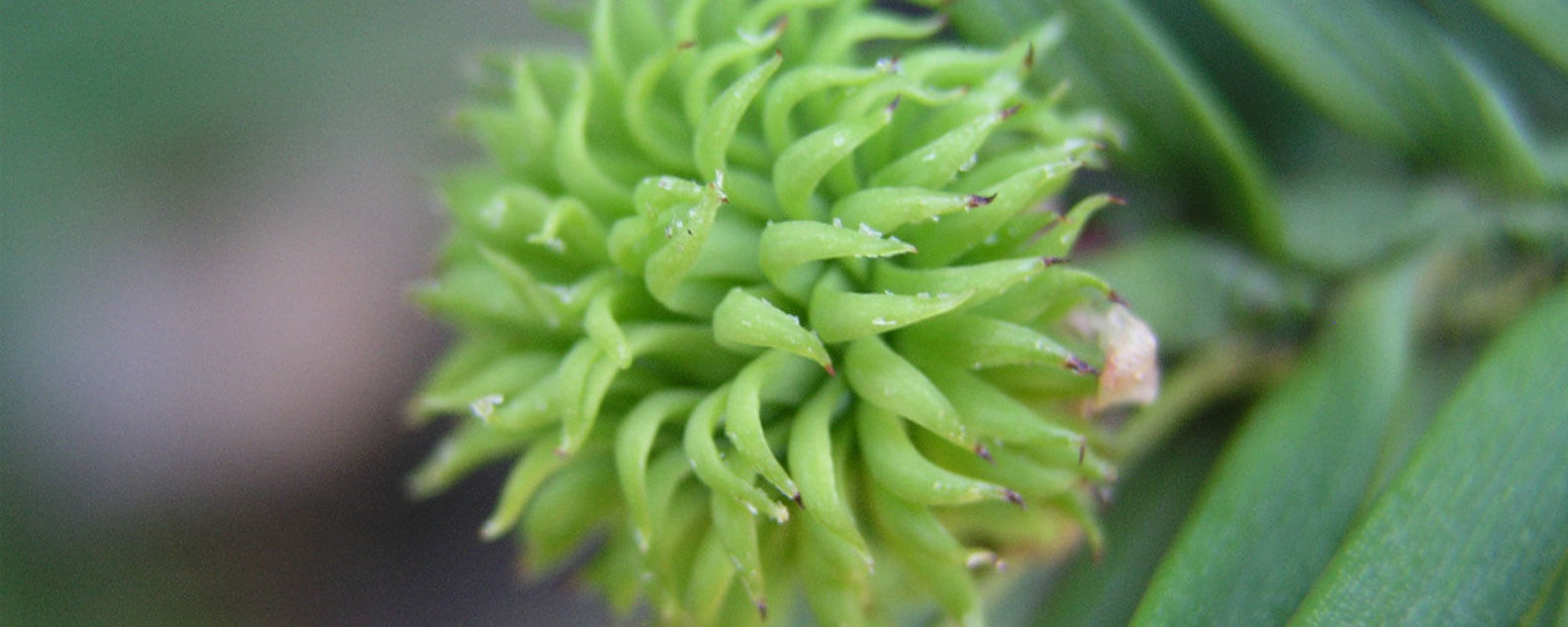
Be aware that Wollemi Pine (Wollemia nobilis, family Araucariaceae) is a rare emergent rainforest tree, and although it has survived in the wild over many millennia, some growing situations are better than others.
In the wild, Wollemi Pines begin rise to a height of about 40 metres. They are similar in stature to Norfolk Island, Cook or Hoop pines (Araucaria species). At the Australian Botanic Garden Mount Annan we have successfully grown Wollemi Pines in pots for more than twenty years.
Having a Wollemi Pine in the garden allows everyone to help conserve this unique critically endangered species
DR CATHY OFFORD
Climatic and growing conditions
Wollemi Pines are the least heat tolerant of the Australian Araucariaceae species. We recommend growing them in areas where the maximum temperature is 35°C (95°F) and a minimum of -10°C (14°F). A cool, shady area, such as a gully, is ideal.
In general, Wollemi Pines prefer shade (especially when they are young), protection from the wind and a cool root run.
Various websites state that they can be grown in exposed sites with full sun; this is true to a certain extent but be aware that they may be subject to leaf scorch and wind burn. The nature of an "exposed site with full sun" will vary from place to place and between the northern and southern hemisphere – in some places it may be too hot and dry for Wollemi Pines to thrive.
This species prefers acid soil; in their natural habitat the soil pH is as low as 4, and in cultivation you should aim for a pH of less than 6. You can test your soil pH with a store-bought testing kit. To lower soil pH, use a granular sulphur (following application rates as per your soil type) and incorporate more organic material into your soil. Note that sulphur works slowly, taking approximately six months to alter the pH.
The soil should be organically rich, moisture retentive and well-draining. Planting on a slight slope is ideal to enhance draining capacity.
It is best to plant your specimen in either spring or autumn.
In a pot or in the ground?
The Wollemi Pine grows equally well as a garden or potted specimen. Whilst the growth rate is slightly slower in a pot, they can be maintained easily and for many years. If your garden cannot provide the optimum growing environment (consider the aspect, climate and soil), or you don’t have a garden that you can plant into, then you still have the option of growing a healthy specimen on a patio or in a courtyard in a pot. Whilst it is possible to grow indoors, be aware that it will never look its best in an air-conditioned environment.
Growing Wollemi Pines in pots
Plastic and terracotta pots are both suitable options.
Plastic pots are an inexpensive, durable and lightweight. Pot weight is a factor if you plan on moving your specimen during the seasons. Plastic pots are very resistant to freezing temperatures. They retain moisture more readily than terracotta pots, however the surface heats up and cools down quickly.
Terracotta pots are porous, allowing air and moisture to penetrate. Terracotta pots protect roots from rapid changes in temperature. Their added weight benefits taller specimens with a reduced risk of blowing over.
Whether you choose plastic or terracotta, ensure your pot has ample drainage holes at the base to prevent overwatering.
Repotting
Early spring is the best time for repotting, before your Wollemi Pine has pushed out its new flush of branches. The fresh soil and slow release fertiliser will aid and boost this season’s new growth. Repotting once the new branches have opened is a little trickier; the new growth is very soft and easily damaged.
Repotting has more to do with root mass than the exact height of your tree. A simple squeeze test of the pot (if you are using a plastic pot) informs you whether it is time to repot: If the pot is very firm and difficult to squeeze, then the roots have already reached the edge and base of the pot. If it is easy to squeeze and you can feel a lot of movement in the soil, the roots are still catching up to fill the volume of soil, and you can wait another year.
On average, you can expect to repot Wollemi Pines every two years. However, growers who apply a constant liquid feed may need to repot annually.
Select a premium potting mix that is certified to meet the Australian Standards. This should not be a potting mix suitable for Australian native species, as these are too low in phosphorus. Selecting an ericaceous mix ensures that it will be more acidic; these mixes will be labelled as suitable for Azaleas, Rhododendrons or Camellias. You can add some controlled release fertiliser to your mix, or as a top dressing once you have repotted the plant.
Do not be tempted to plant into a pot that is very large compared to the size of the root mass! You may consider it a time-saver, but it runs the risk of root rot. If the tree is sitting in a large volume of new soil, there will be more water held than the roots are able to take up. This reduced aeration means the roots are effectively drowning. Going up one standard pot size should suffice, two sizes up is the maximum advised. For example, from 175mm to 200mm in diameter, or 200mm to 250mm.
To maintain a high-quality root system, root management is a critical step in the repotting process. Without it, you may end up with circling or bent roots. Root defects can lead to reduced vigour, growth rate and stability. This is extremely pertinent if you have plans on planting your tree in the ground. Often upon inspection, you will need to carry out some basic root pruning.
Roots will often grow to the edge or base of the pot, then deflect down, up and around the periphery of the root ball, forming a type of shell. “Shaving” and pruning the shell on the periphery and bottom of the root ball will eliminate most of the defects. Root defects should be removed at the point just behind the bend in the root. New roots will typically grow from just behind the cut in a fanlike pattern away from the trunk. Sharp, disinfected knives and secateurs are the best tools for this job.
Planting too deeply can also cause defects at the root collar, so ensure the root collar is just below the surface when you repot.
Pruning
Wollemi Pines have a natural self-coppicing and multi-stemmed growth habit. This is more evident in mature specimens, especially in the wild sites.
Pruning techniques will help you manage and create your desired tree. To maintain a central leader stem, simply remove any stems that appear from the base or along the trunk. These cuttings can be used for vegetative propagation. If you prefer to stimulate a more branched look, cut out the central leader stem. This can be done on any point of the trunk. New stems borne from dormant buds will emerge from the cut point.
If you intend on using the cutting material for propagation, autumn is the best season. If you are carrying out major formative pruning; such as coppicing, early winter is the best season.
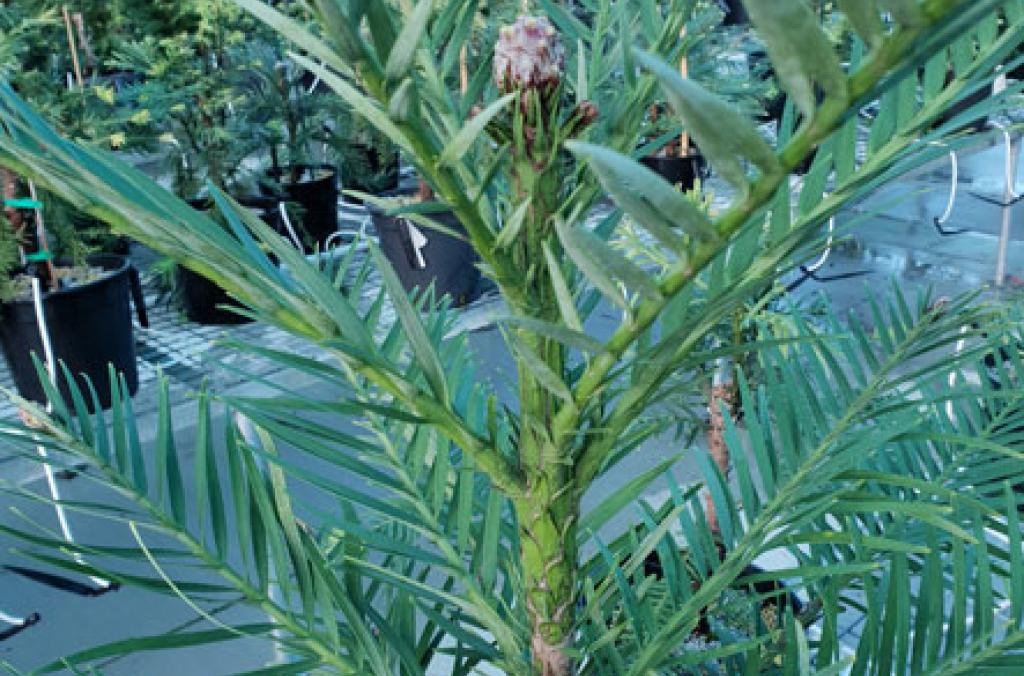
In May, waxy ‘polar caps’ form on the growing tips to protect the next flush from cold temperatures. 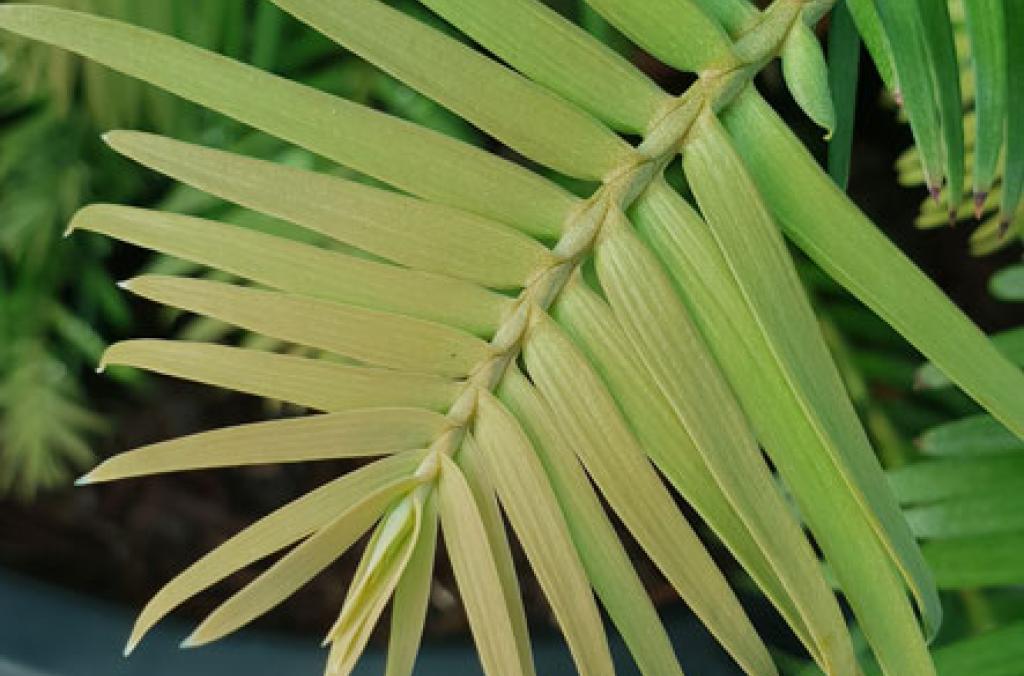
In July, any recent growth on branches may have a blushing-bronze hue. 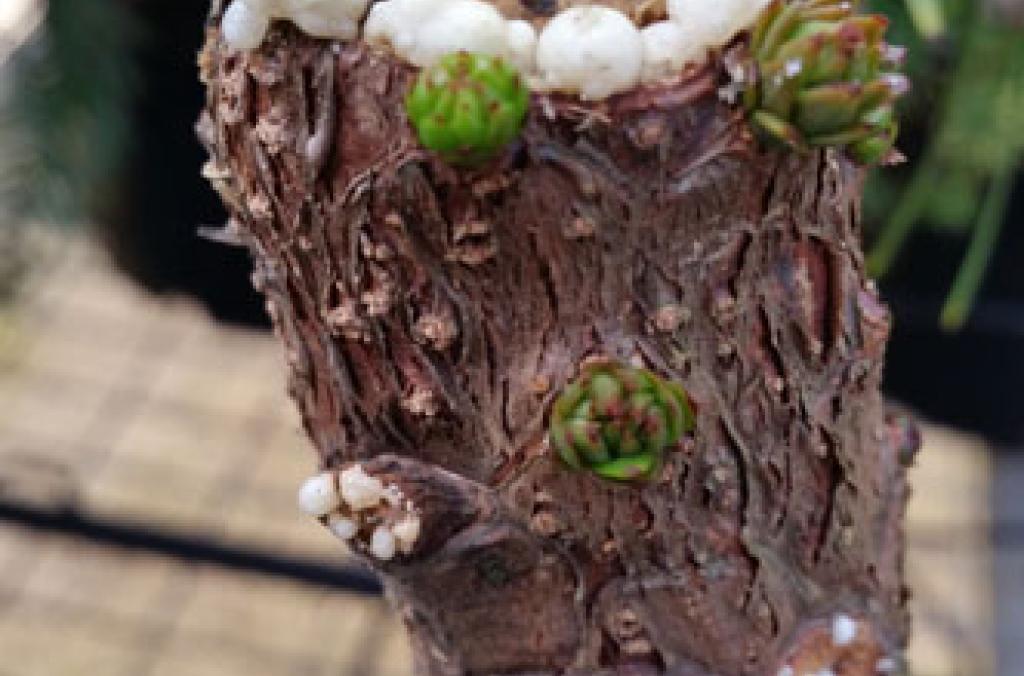
If pruning occured in June, by August dormant buds begin to burst through the bark. 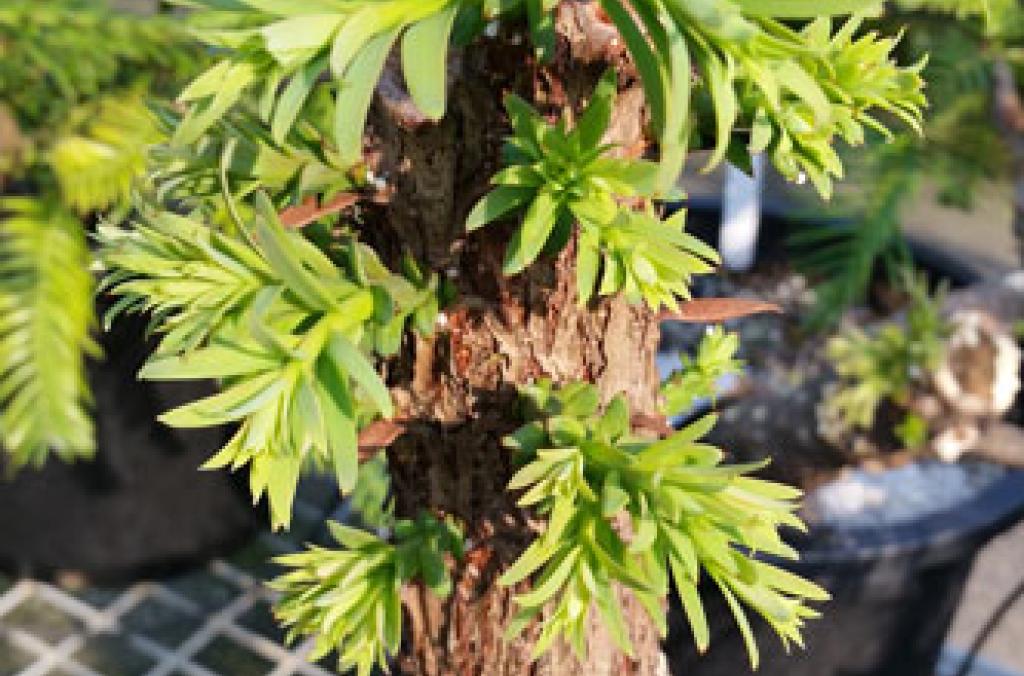
Buds from pruned stems continue to grow in late August. Prepare your materials for repotting, planting and fertilising, taking care to maintain good hygiene. 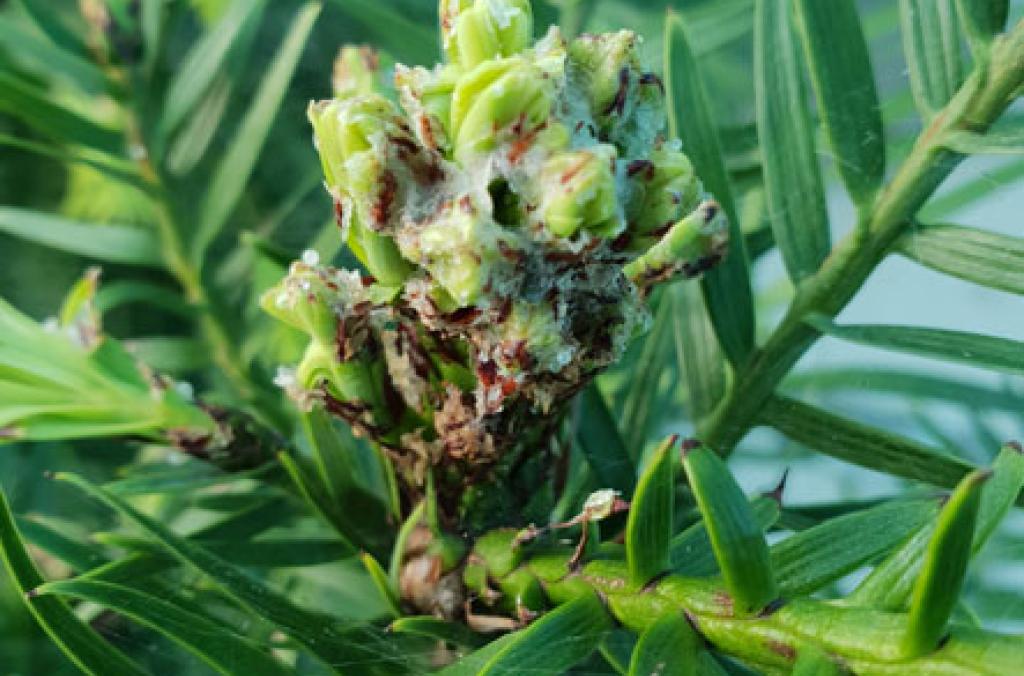
Buds from pruned stems continue to grow in late August. Prepare your materials for repotting, planting and fertilising, taking care to maintain good hygiene. 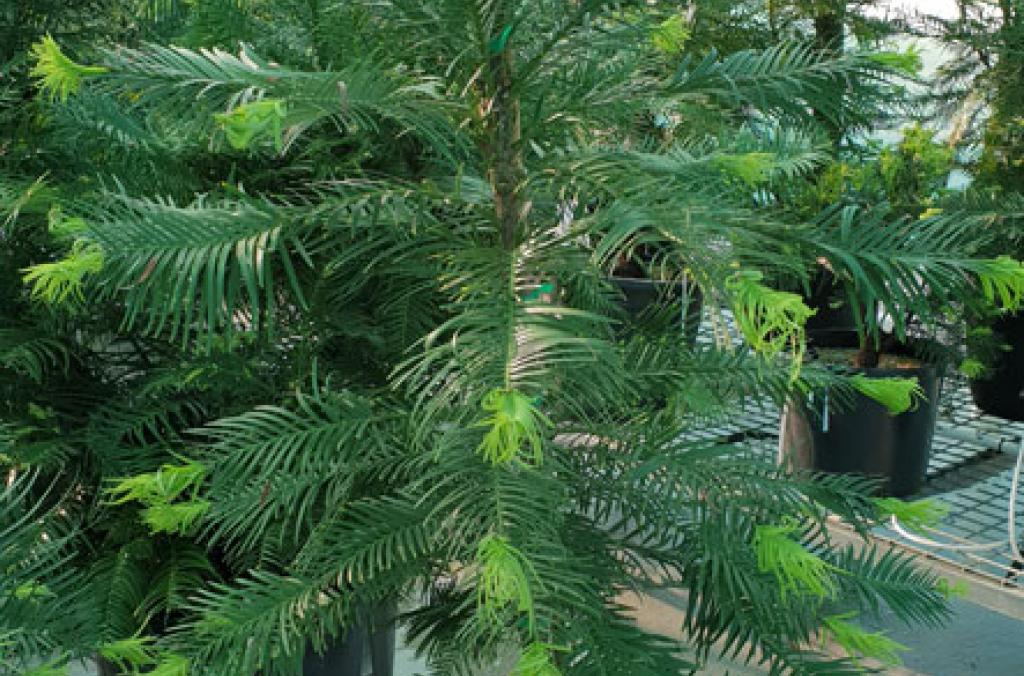
Buds from pruned stems continue to grow in late August. Prepare your materials for repotting, planting and fertilising, taking care to maintain good hygiene. 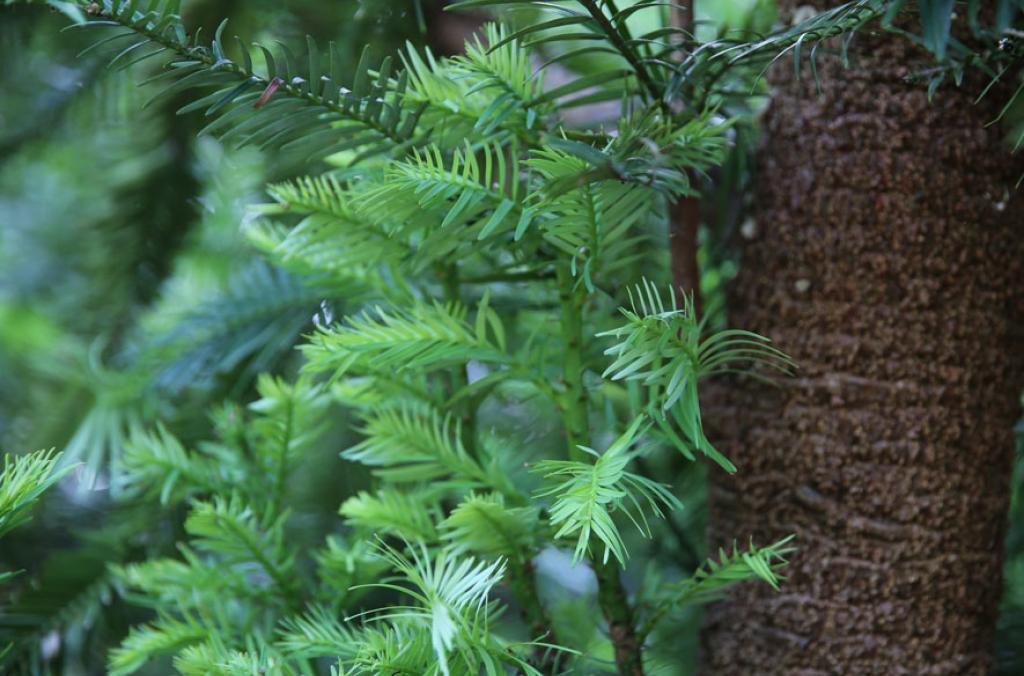
During November, the new foliage begins to harden and change colour. 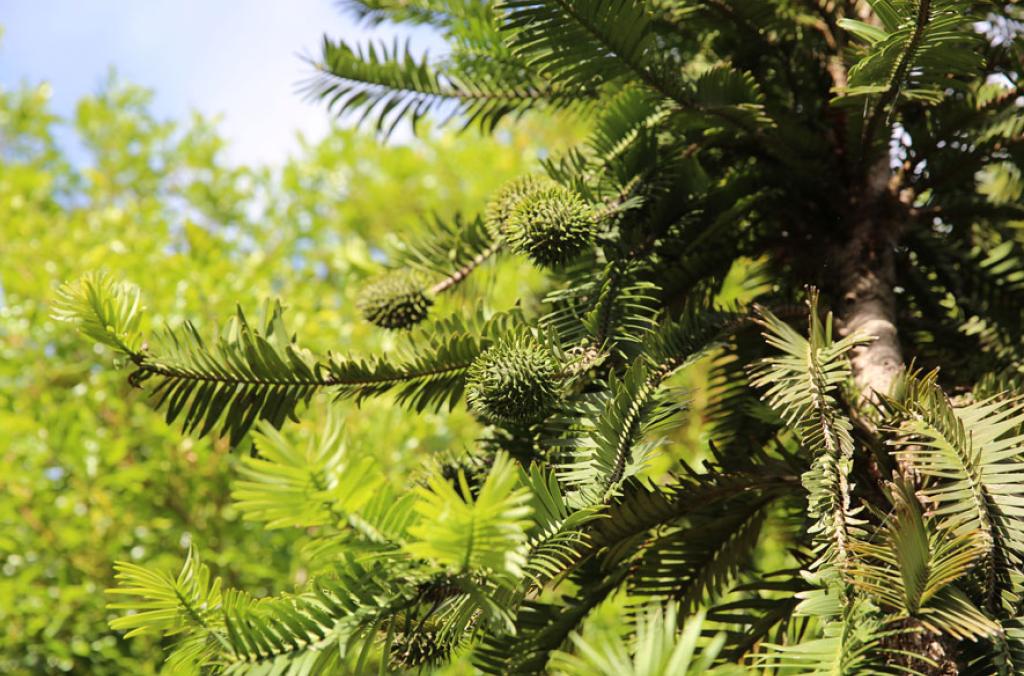
In December, trees over 8 years old may develop female cones (on higher branches).
Irrigation
Wollemi Pines appreciate regular watering in general. This means frequent watering in the warmer months and once or twice a week in the cooler months (this may slightly vary depending on your climate and soil type). The golden rule is they prefer moist conditions, but do not tolerate “wet feet”. Regular watering must be matched with well-draining soil.
Mulching will assist with regulating soil temperature and moisture retention.
Overwatering and underwatering causes plant stress, which increases susceptibility to pests and diseases.
Signs of overwatering include:
- A loss of vigour
- Yellowing leaves
- Leaf scorch
- Water-soaked blisters on the branches
- Lesions on the trunk
- Mushrooms or algae around the root zone
- Root rot
- Soil has foul smell
- A slow deterioration in the plant
Signs of underwatering include:
- Brown crispy tips on branches
- Curling branches
- Under sized branches
- Die-back
- A rapid deterioration in the plant
Fertiliser
Although the soil in their natural habitat is naturally low in nutrients, the Wollemi Pines are heavy feeders, respond well to fertiliser and are not sensitive to phosphorus.
We suggest using a well-balanced controlled release fertiliser suited for general tree growth. An ideal nutrient ratio would be 15 - 4 - 9 (N-P-K) with trace elements. Apply annually in early spring. You can also supplement this with fortnightly liquid feeds as a soil drench or foliar feed during the active growth periods.
We also recommend using biostimulant products; including humic and fulvic acids, seaweed extracts, and beneficial bacteria and fungi. These improve the microbial activity of the soil, nutrient uptake and efficiency, increase tolerance to environmental stressors and encourage production of plant defence compounds.
Pests & Diseases
Phytophthora cinnamomi is a soil-borne plant pathogen that causes root rot. It results in “dieback” and sometimes eventual death. The dieback symptom may present as if the tree is suffering from drought; this is due to the tree being unable to take up water and nutrients. Be on the lookout for wilting, necrosis, leaf chlorosis, lesions on the trunk and collar rot.
Phosphonate fungicide is a known effective treatment. Phosphonate is not used as a fungicide (to kill the pathogen) but rather as a preventative treatment. It activates plant cell defence mechanisms which prevent disease progression. Application methods include foliar spray, soil drench and tree injection.
Wollemi Pines are also highly susceptible to some fungal pathogens in the Botryosphaeria and Fusicoccum genera. These are endophytic latent pathogens, residing on the living plant tissue as benign fungi, but with the ability to develop into aggressive pathogens when the trees are stressed. Symptoms include damping-off, dieback and collar rot. Be on the lookout for spores which develop on the diseased tissue.
Remove diseased tissue and disinfect pruning tools in between cuts.
There are a few pests common to Wollemi Pines:
- Golden Mealybug – treat with Cryptolaemus larvae (predatory ladybird beetle)
- Thrips – treat with Montdorensis (predatory mites)
- Looper caterpillars – treat with hand removal and Dipel spray
The biological controls mentioned for treatment are available for purchase from commercial suppliers.
Remember that the first line of defence in pest & disease management is following best horticultural practice to create a healthy growing environment. Correct site selection, healthy soil, correct watering and fertilising regimes along with proper hygiene measures all contribute to plant health.
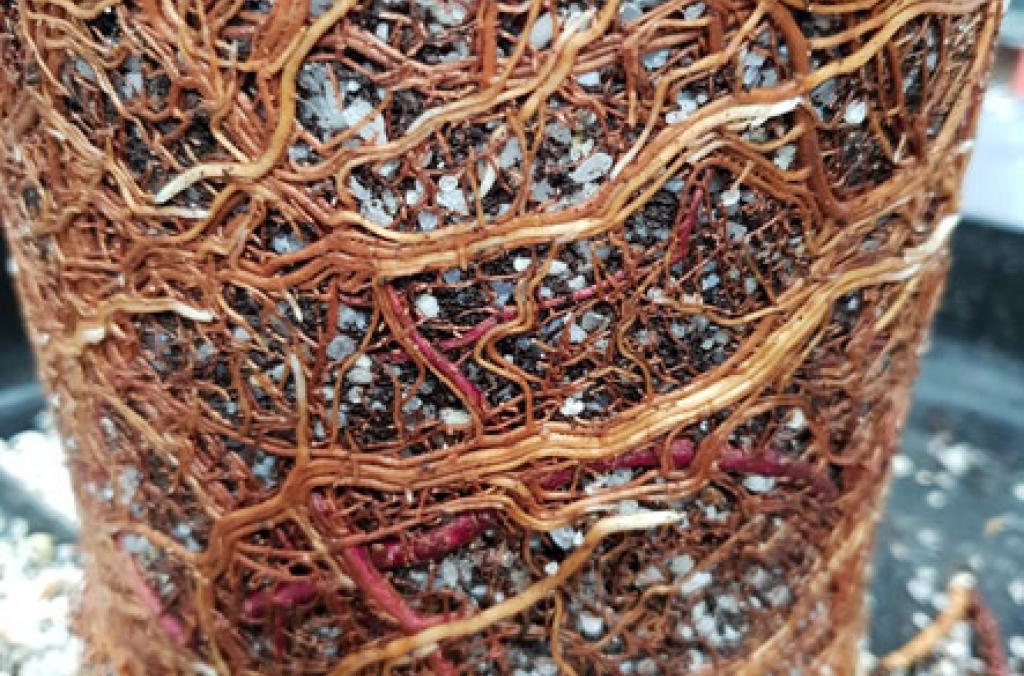
Phytophthora is a serious dieback disease affecting Wollemi Pine. 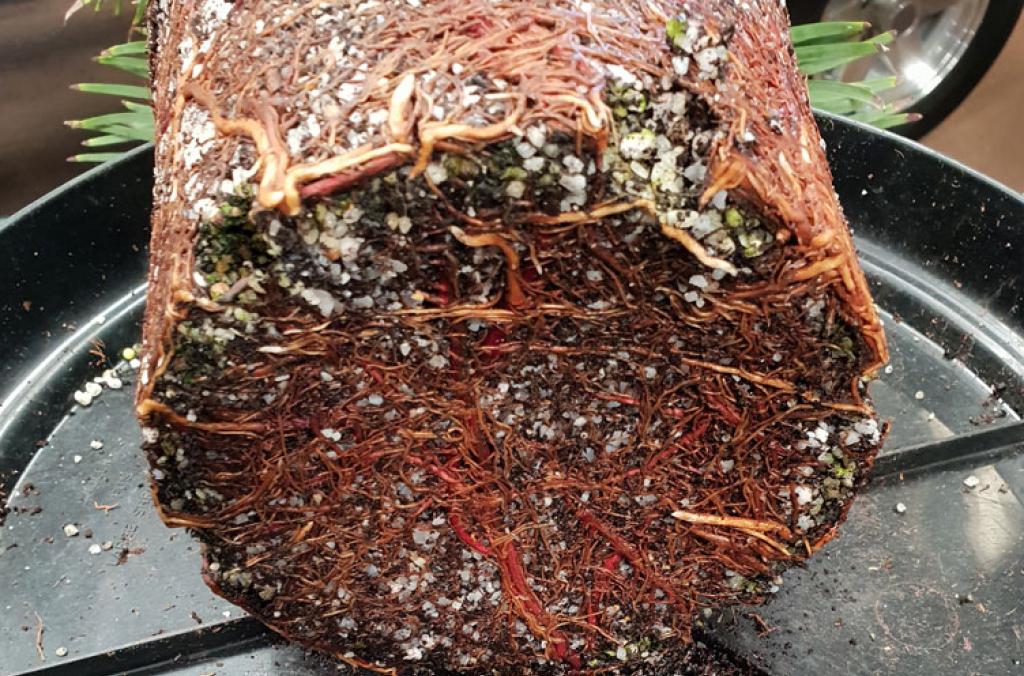
Root defects on pot-bound plants can lead to reduced vigour, growth rate and stability. 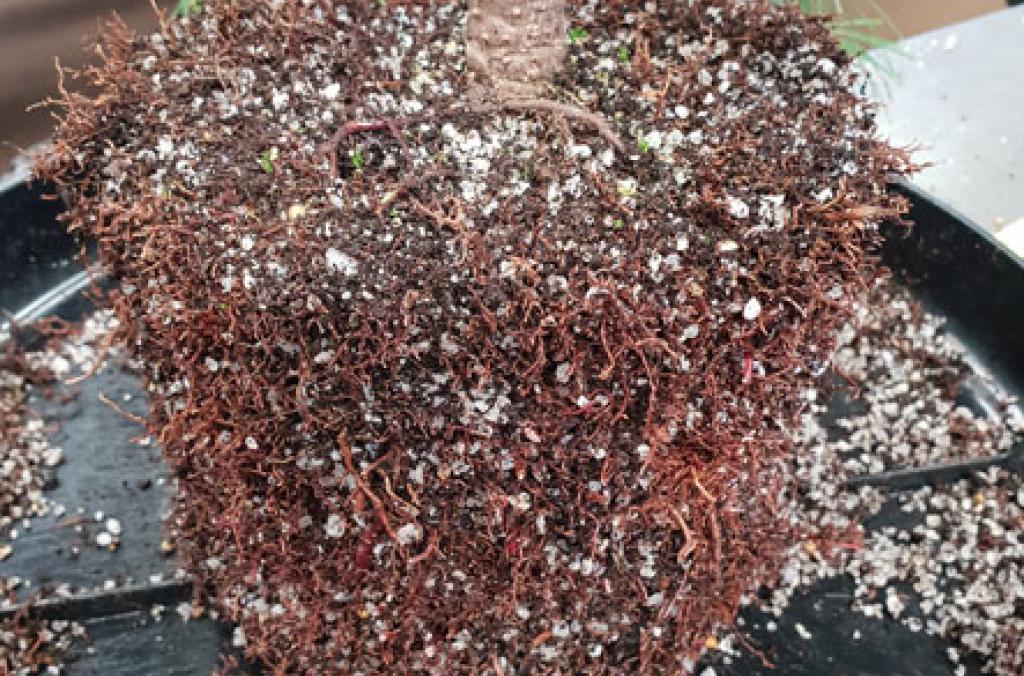
Root pruning the sides and bottom of the root ball will eliminate most of the defects. 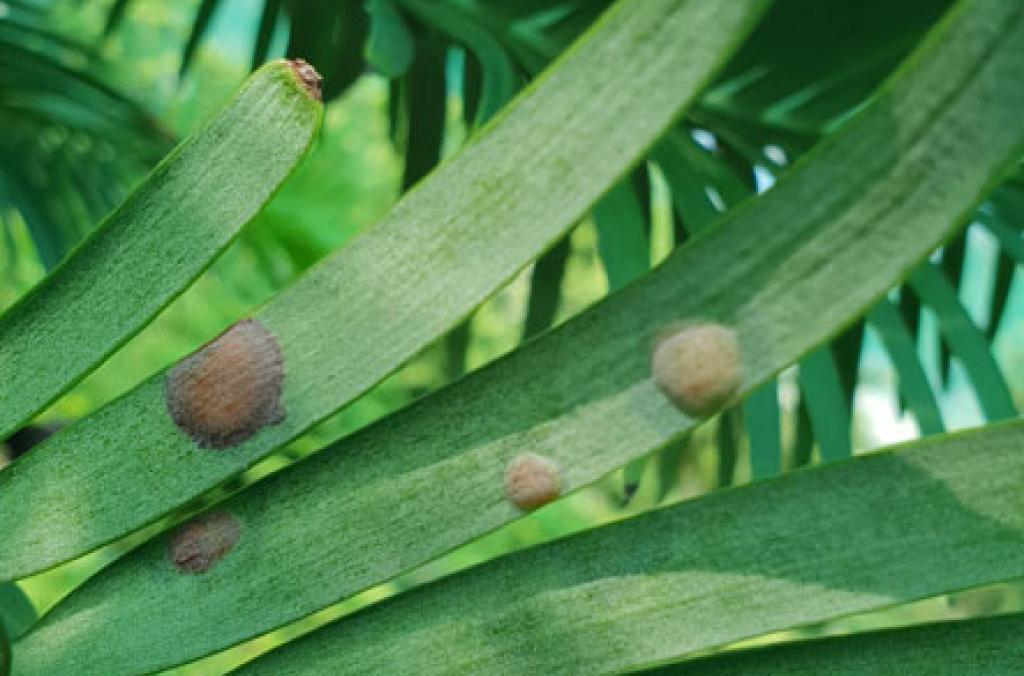
Water-soaked blisters on the leaves can indicate overwatering. 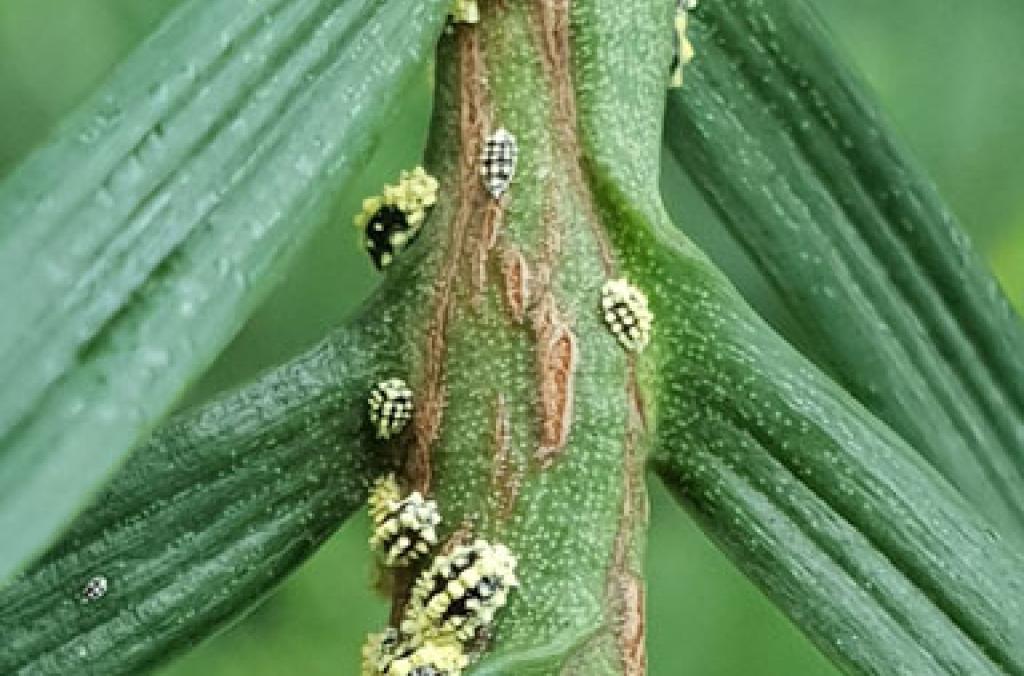
Golden mealybug is a common pest on Wollemi Pines. 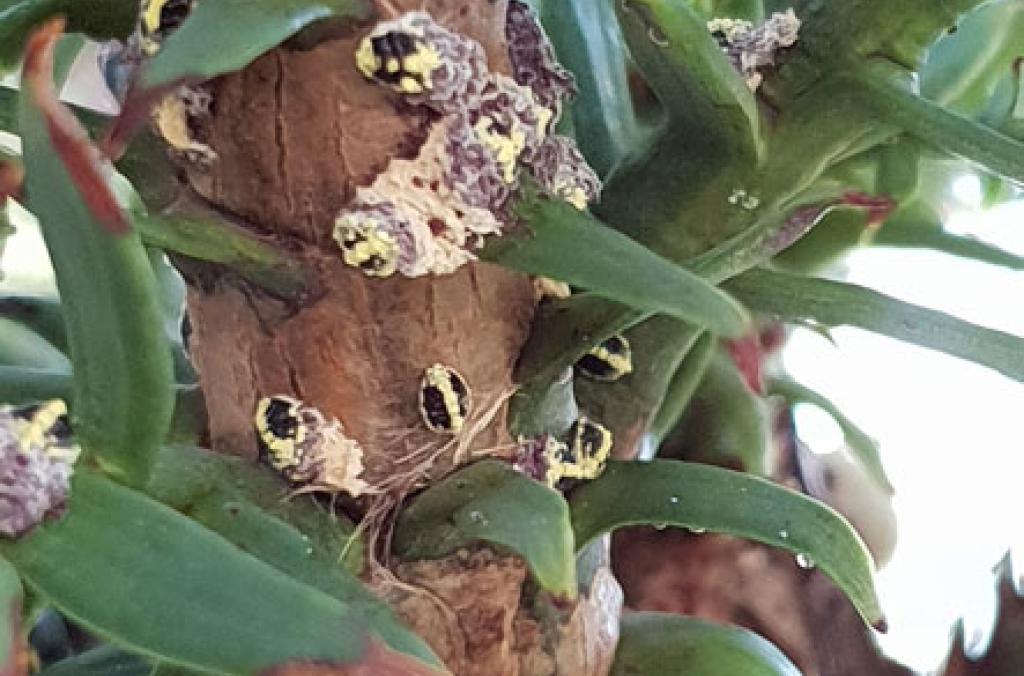
The common pest, Golden Mealybug, is now in its egg-laying life stage. 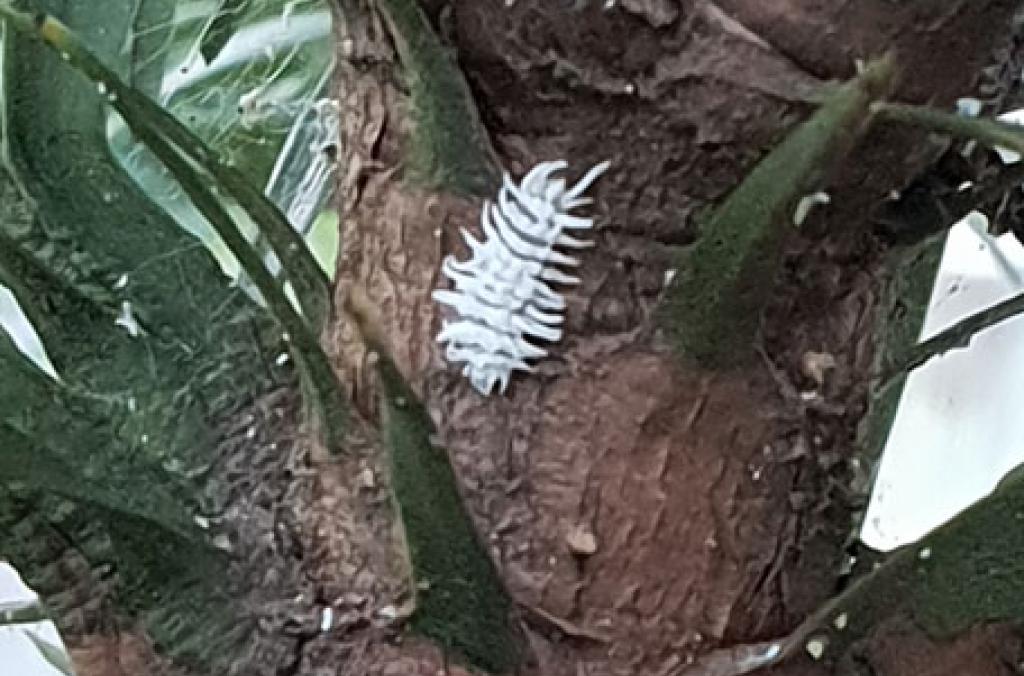
Golden Mealybug can be treated with a biological control, Cryptolaemus larvae (predatory ladybird beetle). 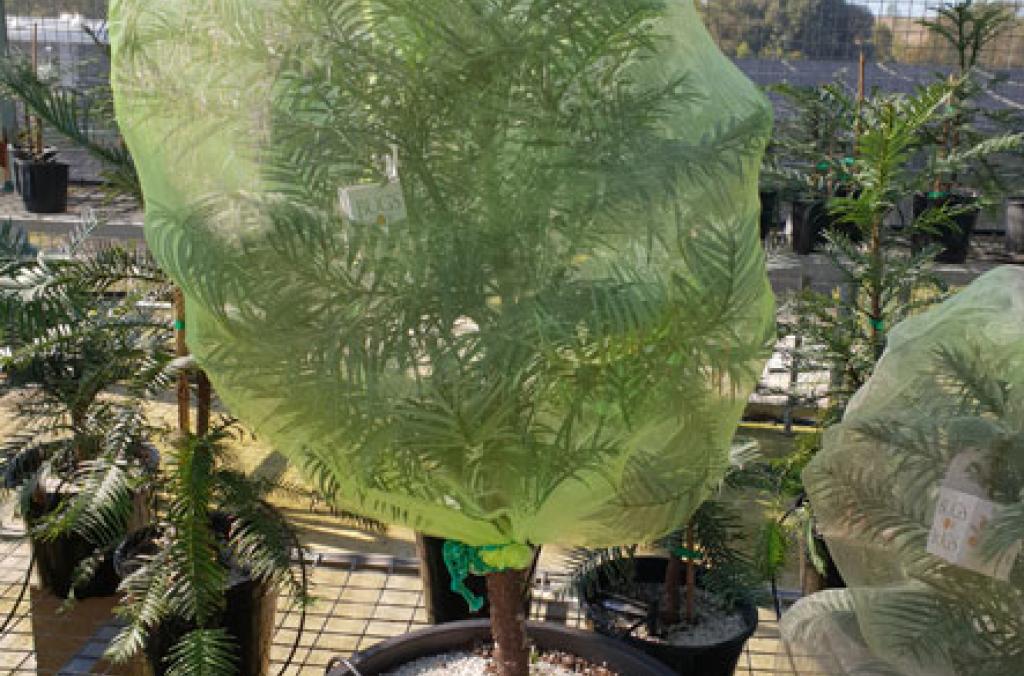
Once the predatory Cryptolaemus larvae has grown into the adult beetle stage, it needs to be kept on the target plants. 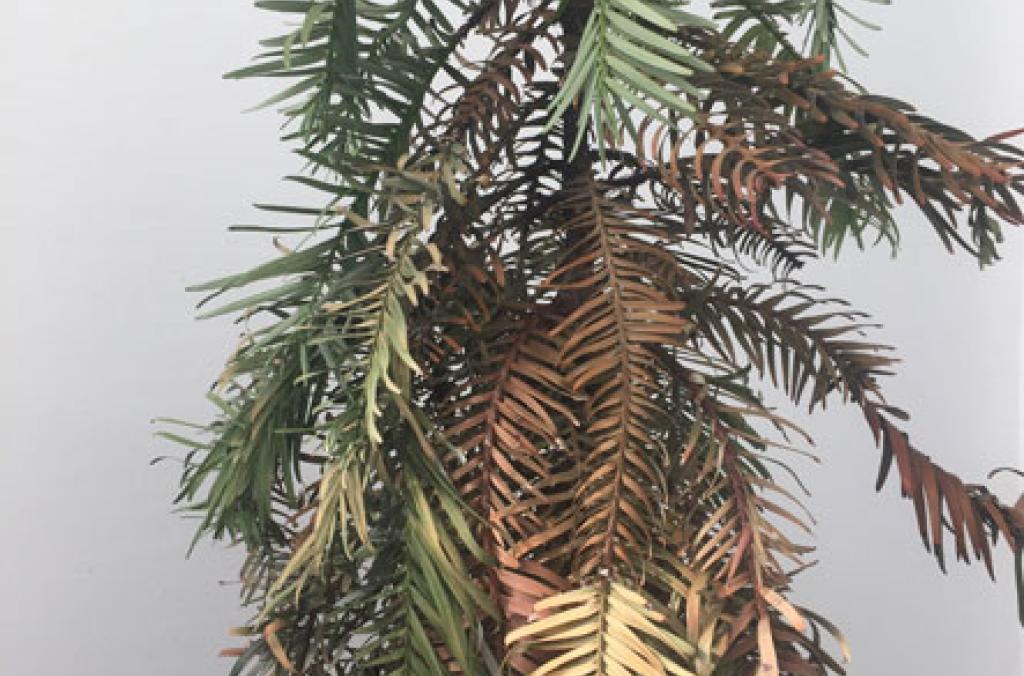
Phytophthora is a serious dieback disease affecting Wollemi Pine.
Visit a Wollemi Pine at the Gardens
Wollemi Pines are cultivated at all three sites of the Botanic Gardens of Sydney.
- The Wollemi Pine growing in the heart of the Royal Botanic Gardens Sydney was planted by Principal Research Scientist from the Australian Botanic Garden Mount Annan Dr Cathy Offord in 1996. Now over 6 metres tall, this plant has previously been decorated as a truly Australian living Christmas tree.